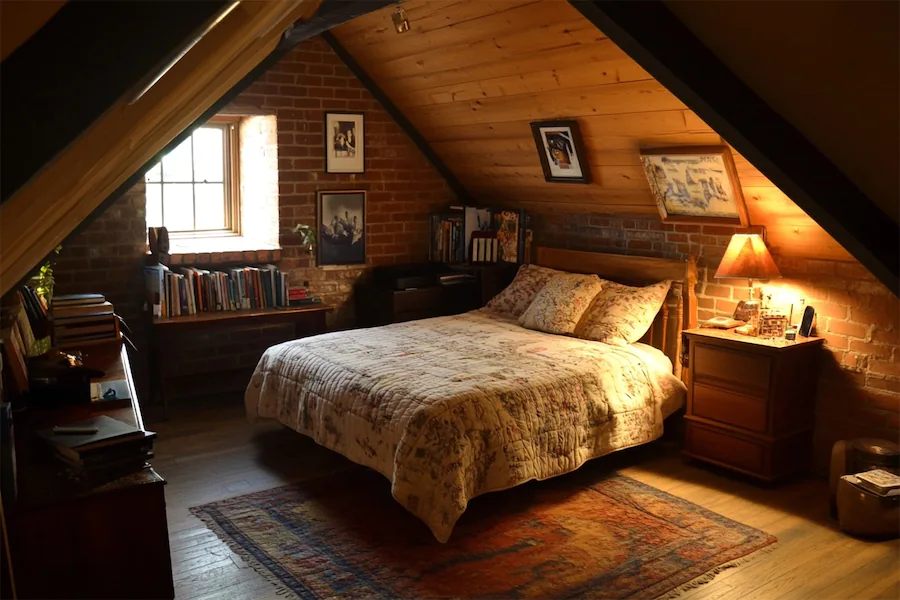Transforming an attic into a bedroom offers a unique and cozy retreat, making efficient use of underutilized space.
History and Origins of Attic Bedrooms
Attic bedrooms have long been associated with charm and seclusion. Historically, they were often used as servants’ quarters or children’s rooms. In modern times, converting an attic into a bedroom has become a popular way to maximize living space, especially in urban areas where square footage is limited.
Key Features of Attic Bedrooms
- Sloped Ceilings: The distinctive angles add character but can present design challenges. Embracing these architectural quirks can lead to creative and cozy layouts.
- Skylights and Dormer Windows: Introducing natural light brightens the space and makes it feel more open. Skylights are particularly effective in attics, providing ventilation and a view of the sky.
- Exposed Beams: Showcasing structural elements adds rustic charm and warmth to the room. Exposed beams can be painted or stained to match the desired aesthetic.
- Built-in Storage: Custom cabinetry and shelving make the most of limited space, fitting seamlessly into nooks and crannies. This approach helps maintain an uncluttered environment.
Applications of Attic Bedrooms
- Guest Rooms: Providing a private and cozy space for visitors, attic bedrooms can be designed to feel like a retreat. Adding comfortable furnishings and thoughtful decor enhances the experience.
- Master Suites: Transforming an attic into a master bedroom with an ensuite bathroom creates a secluded sanctuary away from the main living areas. Incorporating luxurious materials and finishes can elevate the space.
- Children’s Rooms: The whimsical nature of attic spaces appeals to children, offering a sense of adventure. Designing with playful colors and themes can make it an ideal kids’ bedroom.
Considerations When Designing Attic Bedrooms
- Insulation and Ventilation: Proper insulation and ventilation are crucial to maintain comfortable temperatures year-round. Consulting with professionals ensures the space is energy-efficient and habitable.
- Lighting: Combining natural light with well-placed artificial lighting creates a warm and inviting atmosphere. Consider using wall sconces or pendant lights to add ambiance.
- Access and Egress: Ensuring safe and convenient access, such as compliant staircases, is essential. Additionally, meeting building codes for emergency egress is vital for safety.
- Space Optimization: Utilizing multifunctional furniture and thoughtful layouts maximizes the usability of the room. For example, placing the bed under the sloped ceiling can free up valuable floor space.
Conclusion
Attic bedrooms offer a distinctive and intimate living space that combines architectural interest with practical design solutions. By addressing structural considerations and embracing the unique features of the attic, you can create a comfortable and charming bedroom retreat.
